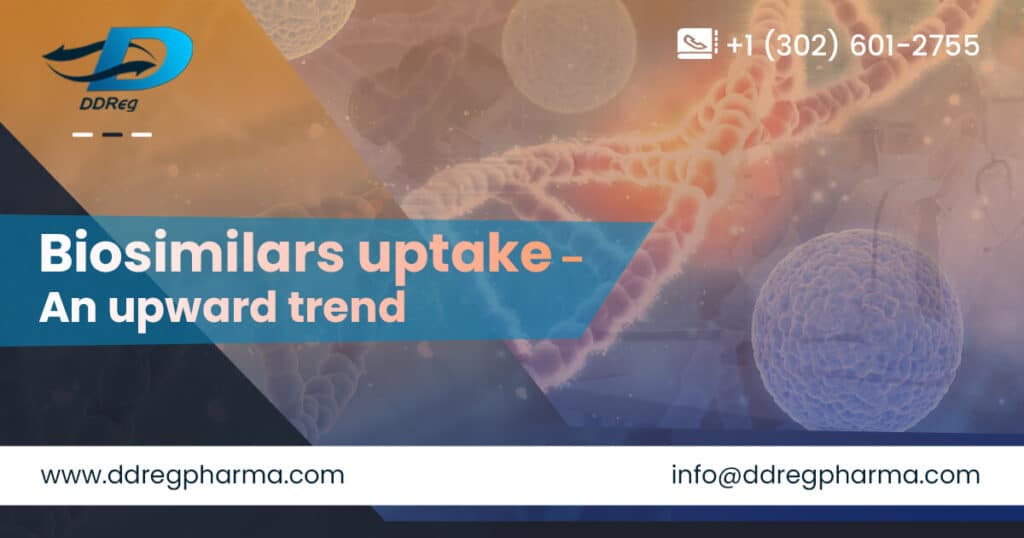The development of biologic products has increased over the last few years in order to treat complex and serious conditions. These biologics, or innovator products, are approaching the end of their exclusivity period which warrants for the development of biosimilars to support timely access to alternative and more affordable treatment options for patients in need.
However, due to the complexity of biosimilar molecules, its development into a medical product or its therapeutic impact as well as the potential of offering better health economics compared to its reference molecule are associated with concerns, questions and curiosities raised by patient population which may influence biosimilar uptake. The US FDA released a collection of patient-friendly information to communicate key safety concepts that would educate patients on the safety surrounding biosimilars [1-3].
But what about some of the other key factors that can influence biosimilar uptake? And what do the market dynamics for biosimilars look like?
Factors affecting biosimilar uptake and US biosimilar market dynamics.
A recent report highlighted that the US market for biologics has faced an increase of roughly 12.5% annually over the last 5 years. Biosimilars that have been launched in the USA account for 24% of the competitive molecule. Biosimilars have reached over 60% of the molecule’s volume within the first 3 years of its launch for bevacizumab, trastuzumab, and rituximab [4].
Interchangeability
Indeed, the acceptance and use of biosimilars has increased over the last few years and depends on many factors such as manufacturing, distribution, reimbursement, physician’s prescribing preference, and even interchangeability. The latter has facilitated better uptake of biosimilars to gain market share and may provide an advantage for a particular biosimilar. For example, in 2021, the US FDA approved its first interchangeable biosimilar insulin product Semglee, after being launched in 2020, that provides a significant cost reduction when compared to its reference product, Lantus [5]. In the same year, the manufacturer of Semglee launched an unbranded interchangeable Semglee; both interchangeable insulins account for roughly 8% of molecule volume.
Cost competition: Biologic vs Biosimilar
Biosimilars that are available at lower costs trigger decrease in the cost per unit for the overall molecule. Subsequently, this typically leads to a decline in the cost for the reference product. Reference product at lower prices- almost close to their biosimilar competitors- lose less volume after the biosimilar has entered the market. However, reference molecules that stay at their higher prices tend to see volume loss. It is expected that the launch of the adalimumab (Humira) biosimilar in 2023 will stimulate market competition where the product’s attributes and decisions on reimbursement will influence the uptake of the biosimilar.
Re-imbursement & billing policies
While cost-related aspects have their influence on the biosimilar uptakes, policies on re-imbursements and how this affects the healthcare providers in using the product for treatment can also affect biosimilar uptake. For example, under the buy-and-bill model, re-imbursement rates can be different depending on the provider and insurer. However, providers that ‘white bag’ therapies are re-imbursed only when administering the product. The pharmacy manages the drug acquisition and costs in this case which can affect the provider’s decision in choosing the biosimilar over the reference product. A report highlighted that biosimilars launched prior to 2019 obtained shares of over 50% in the buy-and-bill model compared to white bagging [6].
What does the future of biosimilars look like?
Biosimilars are expected to contribute towards savings of at least $180 billion over the next 5 years. It is evident that economics is driving the rate of uptake for biosimilars and associated decision-making. The incentive for biosimilar adoption over its reference product is far more complex than for generics over their originator product. Indeed, from a cost perspective, the sales and savings for biosimilars will be determined by market dynamics, competition between manufacturers (big and small), re-imbursement policies etc. With patents protection for key immunology drugs expiring i.e., adalimumab, ustekinumab, and tocilizumab, the launch of their biosimilars for sure will lead to an increase in the share of total immunology volume accessible to biosimilars.
The future of biosimilars looks promising as it provides multiple benefits to various stakeholders in the healthcare system including patients, payers, providers, and biosimilar manufacturing companies. Indeed, collaborative efforts on all fronts will only help in pushing biosimilar uptake forward in order to treat some of the most complex and significantly life-altering conditions yet.
References and further reading:
[1] US FDA Infographic: Biosimilar Basics. 2023
[2] US FDA. Biosimilars: What patients need to know. 2023
[3] US FDA. Biosimilar basics for patients. 2023
[4] IQVIA Whitepaper & Webinar. Biosimilars in the United States 2023-2027. 2023
[5] Matli MC, Wilson AB, Rappsilber LM, Sheffield FP, Farlow ML, Johnson JL. The first interchangeable biosimilar insulin: insulin glargine-yfgn. Journal of Diabetes Science and Technology. 2021 Dec 31:19322968211067511.
[6] IQVIA Whitepaper. Biosimilars in the U.S. Reimbursement and Impacts to Uptake. 2021

